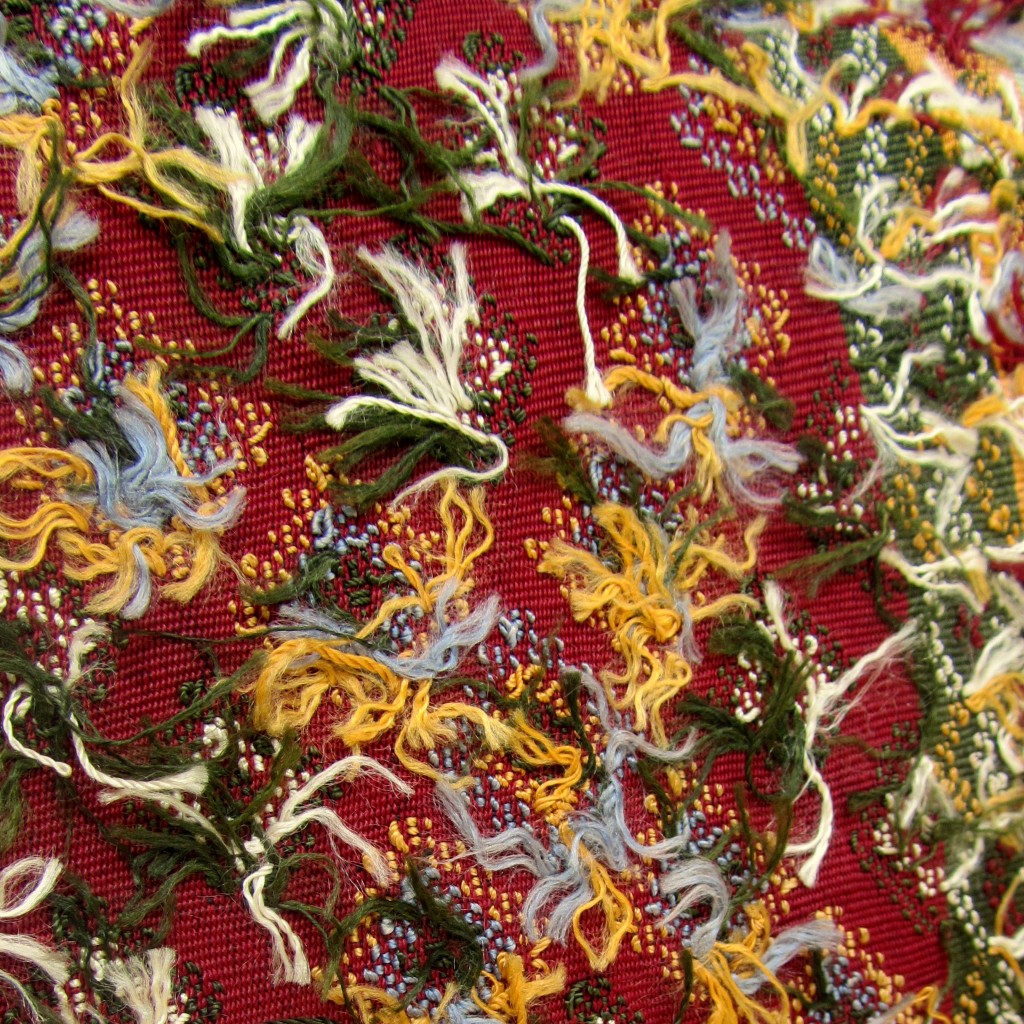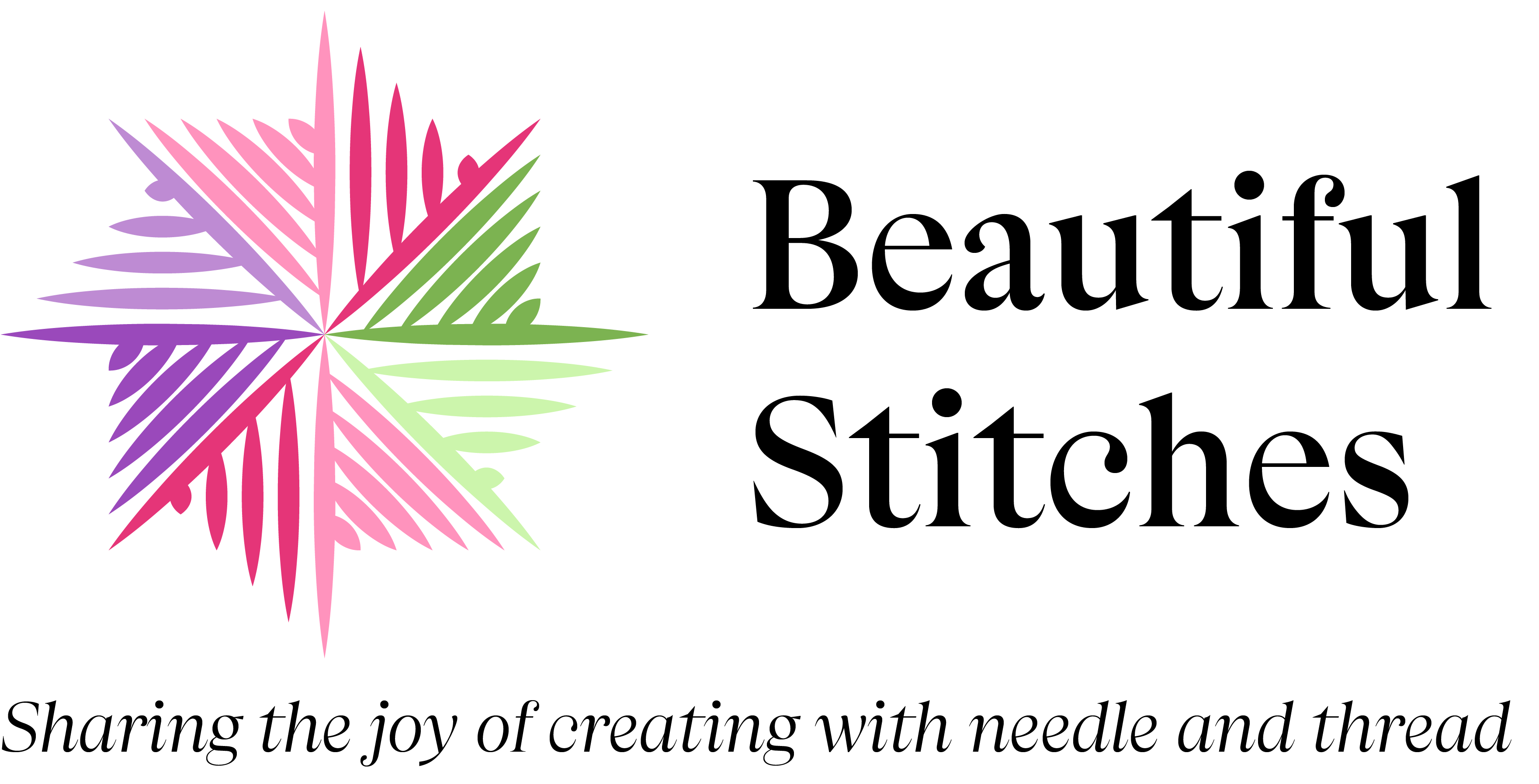My friend Greg has been allowing me to delve into his textile collection once again. Like the Akha cross-stitch I showed you earlier this year, these pieces were purchased in Myanmar. One is a modern piece, and the other is about 100 years old. Greg asked me to have a look at them and see what I could find out about how they were made.
First the modern piece.

This brightly coloured cloth is woven from black cotton with a rainbow style geometric pattern in rayon thread. It has been woven as a single piece and measures approximately 105cm wide and 190cm long. The colour palette cycles through green, yellow, orange, purple, pink, dark yellow, and blue, and the design is composed of zig-zags and diamonds. The colours are just lovely and I can easily imagine this piece of cloth hanging up in Bogyoke Market in Yangon where Greg purchased it.


A clue to its construction can be seen in these detailed photos of the front and back of the textile. The diamonds on the back are a reverse image of those on the front, showing how the colourful rayon thread has been carried across the front and back of the black cotton ground. You can also see on the front of the design where the rayon thread is turned to continue working each row of the design (the angled “stitches” as opposed to the horizontal “stitches”).
The antique fabric is quite different to the modern piece. It was made by the Chin people who live in western Myanmar, northeastern India and Eastern Bangladesh. In the book “Mantles of Merit” by David W. & Barbara G. Fraser there is a picture of a very similar textile on Pg. 125 which is attributed to the Haka area in Western Myanmar and dated 1923-1933.

The detail of the design is very fine – breathtakingly so in fact. The fabric is made of a cotton ground with the fine geometric detail worked in silk thread. Hours and hours of work would have been required to create such fine geometric detail.

And almost as fascinating as the front, the back shows the forest of starting and ending threads for each of the little geometric motifs.

Finally, close inspection reveals that this piece was worked in two loom widths and then carefully joined. Until I knew from the Fraser’s book that I needed to search for a join, I didn’t even know that it was there!

So, how were these gorgeous textiles made? They are both examples of discontinuous supplementary weft weaving. Basically this means that the pattern is woven into the fabric by the use of extra threads (supplementary weft) which are not continuous across the width of the fabric (hence discontinuous). You can see a great picture of this type of work in progress on Kay Faulkner’s blog and also find out more about how to do this type of weaving at Backstrap Weaving.
I found myself really fascinated by these fabrics because my background as a canvaswork embroiderer initially made me look at these fabrics as though they had been embroidered. The colourful geometric designs echo the shapes and colours that I love to play with in my own embroidery designs. I imagined someone painstakingly working the modern piece in much the same way as I am working on a piece of Kogin embroidery at the moment. And as for the Chin piece, the possibility of it being embroidered blew me away because it was just too impossibly fine. But then I felt the same about the Afghan embroidery I wrote about in February this year and that was most definitely hand embroidered – so anything was possible.
As it turns out, both pieces are woven and the skill required to manipulate the supplementary weft threads is just as daunting as embroidering complex geometric designs with a needle. Of course, you could embroider these designs if you wished, but at this scale it would be incredibly time consuming and impractical. But there is something eminently satisfying about learning from one craft to inform another.
Historically, needlepoint evolved to mimic large woven tapestries. I love the fact that these gorgeous textiles from Myanmar will provide similar creative inspiration for one of my embroidery designs in the future.



Love all those details on these fabrics Ann !
Thankyou for visiting my blog Deepa. You are right – the details are just lovely. I am still thinking about how to capture some of that fine detail in my own embroidery designs, but in the meantime it is simply wonderful to look at such beautiful pieces of work.
very excited to see new fabrics from you!!!
I am going to Mynamar and Laos in Jan. Feb 2017 I appreciate any information that you can give me about antique textiles and where to purchase them? I am a professional textile designer.
Thank you. I really enjoyed reading your blog.
Hi Barbara,
Thankyou so much for your comment. I still haven’t made it to Myanmar as yet, so I’m passing on to you information from my husband and his colleagues. They have purchased most of their textiles from Bogyoke Aung San Market, Bo Gyoke Road, Yangon. There are two textile dealers upstairs at the southeastern end of the market who are apparently excellent, selling both new and antique textiles. Also, at least one more downstairs in the centre of the same market. There are also lots of stalls selling textile supplies – thread, beads, fabric, etc – I can’t wait to visit one day! I also have a dear friend who did a textile tour in Myanmar a few years ago, and she suggests that there is no substitute for just exploring and asking for lots of local advice. The Burmese people are very friendly and she came across some excellent pieces in the most unexpected places. Are you on Facebook or Instagram? If so, let me know where I can find you because it would be wonderful to follow your journey 🙂 Kind regards and happy travelling, Ann-Marie
Hi Ann-Marie:
Thank you for this information.
I am on Facebook but I am better on email., I just read this and have already been to Myanmar and Laos.
I explored part of the Bogyoke Market, was in love with the textiles in Mandalay and outskirts and the lotus weaving at Inle Lake. I would love to take a textile lovers group there. The color combinations are so creative and to a western eye, they are just marvelous and exciting!
I will definitely go back.
Welcome to Myanmar, we got more than pattern in different race and interesting.
Come & visit Yangon and find it.
Thankyou Tony. I would love to see more! One day I will accompany my husband on one of his visits